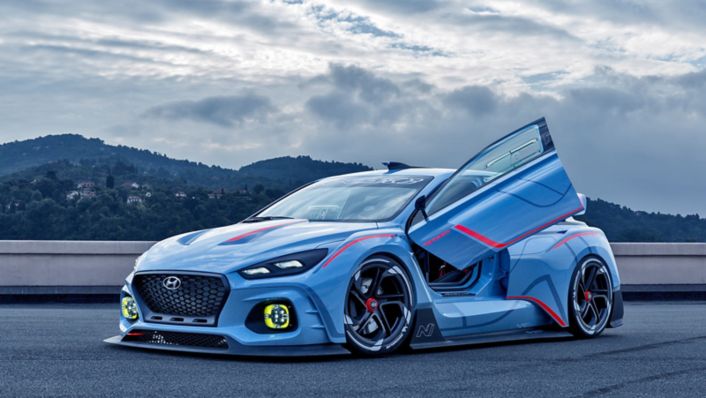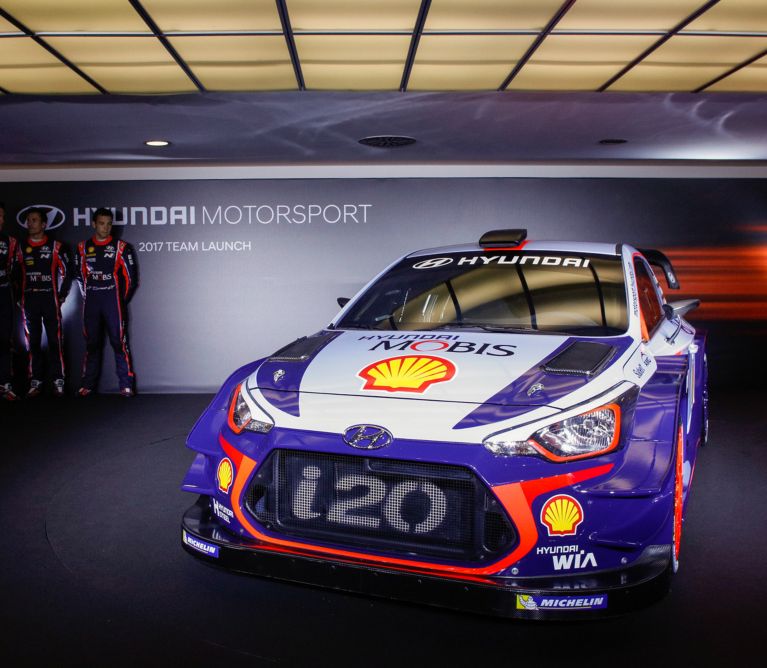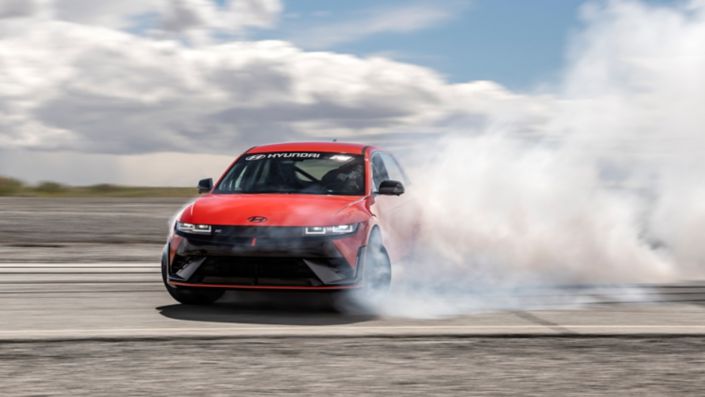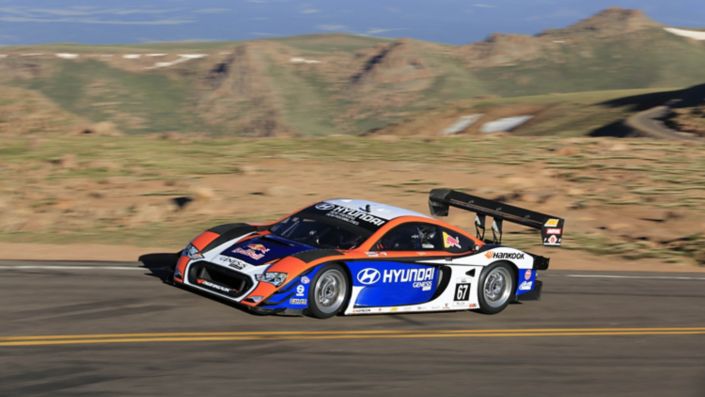Having just finished their most competitive season yet in the World Rally Championship where the team finished second in the Manufacturers’ Championship, all eyes turn to the new season and a brand-new car. The team are looking to build on a hugely successful third season in WRC where they recorded two victories, twelve individual podium results, and 47 stage wins.
Now Hyundai Motorsport’s 2017 WRC challenger has been unveiled at the world famous Autodromo Nazionale Monza motor racing circuit. Hyundai has been combining their engineering expertise with motorsports since the 1990s. Here's how the WRC car has changed since it first hit the gravel, snow, sand and tarmac tracks of the world, along with some spectacular concept cars inspired by racing technology.
Hyundai cars competed in the F2 class of the World Rally Championship in the late 1990s. At the turn of the century, the Hyundai World Rally Team began competing in the championship proper. The first WRC car was based on the Hyundai Accent and after development and testing, debuted at the 2000 Swedish Rally. Three versions of the car participated in the competition from 2000-2003. The second evolution, Accent WRC2, featured revised aerodynamics and improved suspension while a third car, the Accent WRC3 debuted at the 2002 Tour de Corse. In September of the following year, Hyundai withdrew from the WRC.
Almost a decade later, Hyundai announced at the 2012 Paris Motor Show that they would be returning to the WRC for 2014. In December of the same year, Hyundai Motorsport GmbH was established in Alzenau, Germany, with responsibility for Hyundai’s global motorsport activities.
Now Hyundai Motorsport’s 2017 WRC challenger has been unveiled at the world famous Autodromo Nazionale Monza motor racing circuit. Hyundai has been combining their engineering expertise with motorsports since the 1990s. Here's how the WRC car has changed since it first hit the gravel, snow, sand and tarmac tracks of the world, along with some spectacular concept cars inspired by racing technology.
Accent WRC, 2000, 2001, 2003
Hyundai cars competed in the F2 class of the World Rally Championship in the late 1990s. At the turn of the century, the Hyundai World Rally Team began competing in the championship proper. The first WRC car was based on the Hyundai Accent and after development and testing, debuted at the 2000 Swedish Rally. Three versions of the car participated in the competition from 2000-2003. The second evolution, Accent WRC2, featured revised aerodynamics and improved suspension while a third car, the Accent WRC3 debuted at the 2002 Tour de Corse. In September of the following year, Hyundai withdrew from the WRC.
Almost a decade later, Hyundai announced at the 2012 Paris Motor Show that they would be returning to the WRC for 2014. In December of the same year, Hyundai Motorsport GmbH was established in Alzenau, Germany, with responsibility for Hyundai’s global motorsport activities.
After a star-studded launch in Italy of their newest challenger for the 2017 season, we look at how Hyundai Motorsport’s WRC cars have evolved over the years.
i20 WRC 2014
Hyundai’s comeback in the WRC was marked with a car based on the production model of the Hyundai i20. A new rear wing and front spoiler to improve cooling and downforce gave the i20 WRC a new external appearance while further improvements were made to the car’s suspension. Belgian Thierry Neuville was confirmed as Hyundai Motorsport’s for the 2014 season.
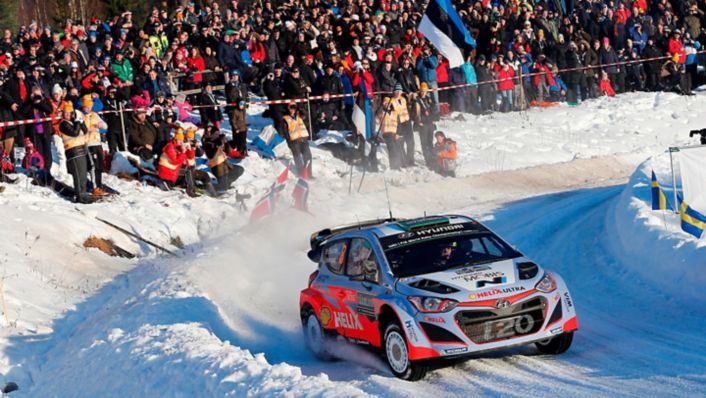
New Generation i20 WRC 2016
In 2015, Hyundai Motorsport undertook a year-long test and development programme with a new car based on the New Generation i20 equipped to WRC specifications. The car featured optimised weight distribution, greater powertrain efficiency and enhanced aerodynamics. Hyundai Motorsport fielded three cars in the 2016 Championship, with the New Generation i20 WRC making a massively successful debut at Rallye Monte-Carlo helping the team to take its first ever Monte stage wins and a third-place finish.
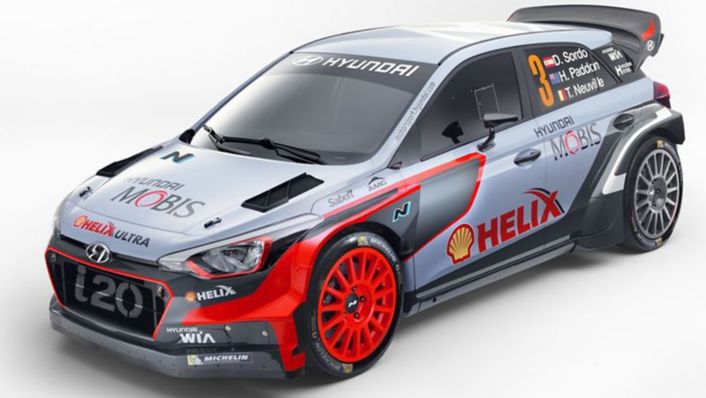
2017 Hyundai i20 Coupe WRC
First previewed at the Paris Motor Show, Hyundai Motosport’s brand new car for the WRC 2017 season had its official unveiling at the Autodromo Nazionale Monza, Italy. It is based on a three-door Hyundai i20 and has been developed in line with new WRC regulations. These new technical rules have given greater aerodynamic freedom to designers, along with more power, an increase to 380HP. After extensive testing, the new car will make its competitive at Rallye Monte-Carlo in January. Hyundai Motorsport will field three cars in every round with drivers Thierry Neuville, Hayden Paddon and Dani Sordo competing under the unified banner of the Hyundai Shell Mobis World Rally Team.
Hyundai Motor’s successful motorsport experiences are also providing the inspiration for a new type of car from the manufacturer: the N brand.
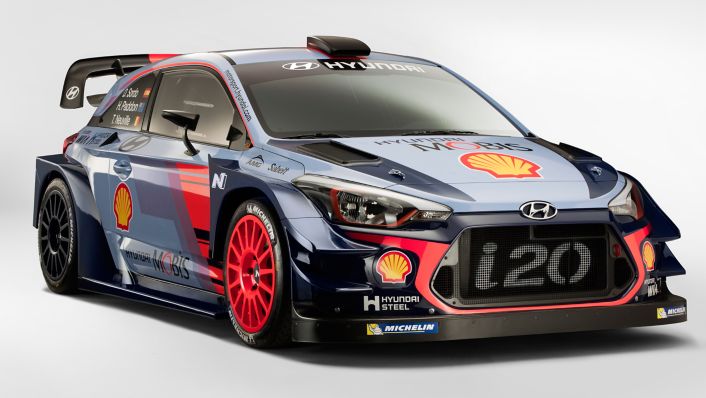
The Hyundai N brand and other notable racing cars
The sub-brand N builds on these technology advances to drive future performance-oriented and race-track-capable models. Hyundai N cars will feature new powertrains and lightweight materials derived from Hyundai Motor’s participation in WRC. The brand is named after Namyang and Nürburgring, two locations at the core of the development and testing of these models. Namyang is the centre of Hyundai Motor’s global R&D network and birthplace of all Hyundai cars, and Nürburgring is Germany’s world famous race track where testing takes place.
RM15 concept
Hyundai’s motorsport endeavours have also inspired unique concept models. The RM15 (Racing Midship 2015) concept is a mid-engine high-performance coupe. It features an aluminium spaceframe covered with light, stiff body panels formed in carbon-fibre reinforced plastic (CFRP). Together, these reduce the total weight of the vehicle by 195kg compared to an all-steel structure. The RM15 is powered by Hyundai Motor’s Theta 2.0-litre T-GDI engine.
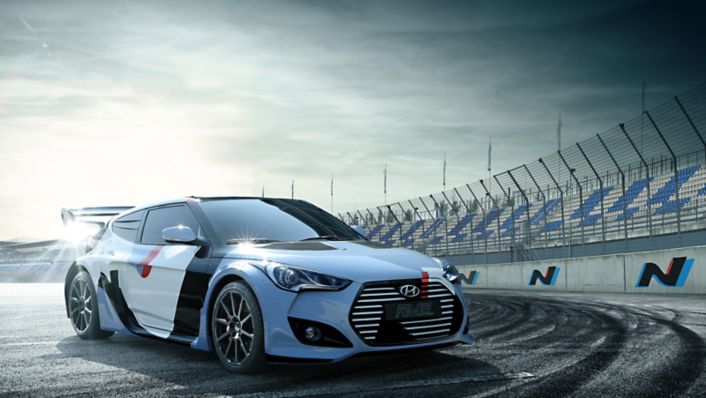
Hyundai N 2025 Vision Gran Turismo
Revealed at the 2015 Frankfurt Motor Show, the Hyundai N 2025 Vision Gran Turismo concept was made exclusively for PlayStation®’s Gran Turismo video game series. The car’s design is inspired by aeronautics and the testing ground ‘Muroc Dry Lake’, where pilots and astronauts train for space travel. The Hyundai N 2025 Vision Gran Turismo’s powertrain is based on the world’s first mass-produced Hyundai hydrogen fuel cell system. Hyundai Motor’s Sound Design Research Lab even designed a unique racing car sound system for the fuel cell based car.
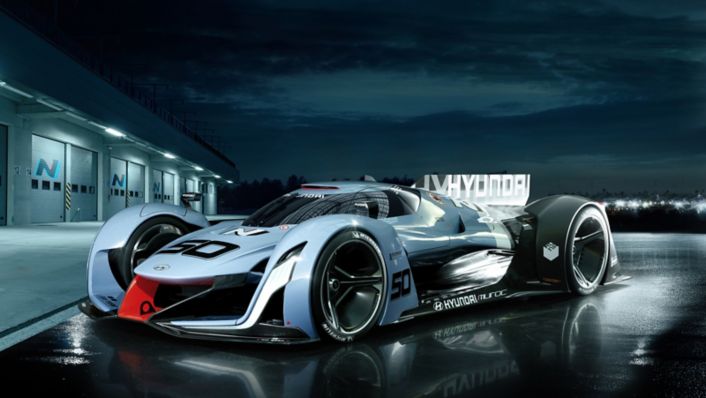
RN30 Concept
The latest high-performance N concept, the RN30, made its the world premiere at the 2016 Paris Motor Show. Based on the New Generation Hyundai i30, the RN30 was born as a racing machine, developed in close collaboration with Hyundai Motorsport (HMSG), Hyundai Motor Europe Technical Center (HMETC) and Hyundai Motor’s Performance Development & High Performance Vehicle Division. High-performance technologies such as faster gearshift, and more precise power are engineered for a thrilling high-speed driving experience.
